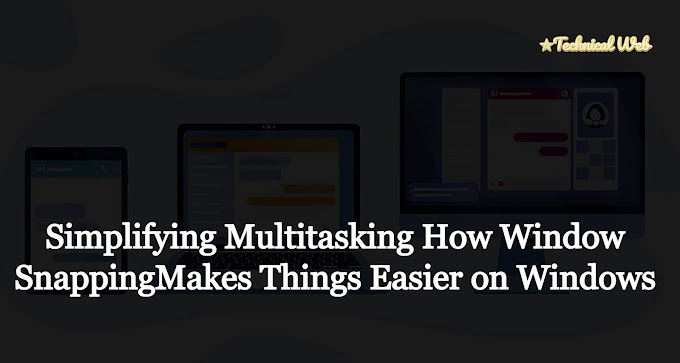Web Scraping with PHP: Extracting Data from Websites Programmatically
Web scraping has become an integral part of data extraction for various applications, and PHP, a versatile server-side scripting language, offers powerful tools for automating this process. In this comprehensive guide, we'll delve into the world of web scraping with PHP, exploring the techniques, tools, and best practices to efficiently extract data from websites programmatically.
 |
| Php programing |
Understanding Web Scraping
Defining Web Scraping: Unraveling the concept and its applications.
Legality and Ethics: Navigating the legal and ethical considerations of web scraping.
Getting Started with PHP for Web Scraping
Setting Up Your Environment: Configuring your PHP environment for scraping.
Essential PHP Libraries: Introducing libraries like cURL and Guzzle for effective data retrieval.
Basic Web Scraping Techniques in PHP
Fetching HTML Content: Retrieving the HTML structure of a webpage.
Parsing HTML with DOMDocument: Understanding DOMDocument for structured data extraction.
Handling Dynamic Content with PHP
Introduction to JavaScript Rendering: Addressing challenges posed by dynamically loaded content.
Using Headless Browsers: Leveraging tools like Puppeteer for dynamic content extraction.
Advanced PHP Web Scraping Techniques
XPath and CSS Selectors: Employing advanced selection methods for precise data extraction.
Handling AJAX Requests: Navigating and extracting data from asynchronous requests.
Dealing with Anti-Scraping Mechanisms
User Agents and IP Rotation: Strategies to mimic human behavior and avoid detection.
Coping with CAPTCHAs: Overcoming challenges posed by automated verification mechanisms.
Storing Scraped Data
Database Integration: Saving scraped data to MySQL or other databases.
Data Serialization: Exploring formats like JSON and CSV for storing extracted information.
Building a Web Scraper with PHP
Creating a Simple Web Scraper: A step-by-step guide to building a basic scraper.
Scalability and Performance Optimization: Techniques for optimizing your scraper for efficiency.
Common Challenges and Troubleshooting
Handling Changes in Website Structure: Adapting your scraper to evolving webpage structures.
Debugging and Logging: Implementing effective tools for error tracking and resolution.
Best Practices and Tips for Web Scraping in PHP
Respecting Robots.txt: Understanding and adhering to the guidelines set by websites.
Rate Limiting: Implementing measures to avoid overloading servers and getting blocked.
Conclusion:
Web scraping with PHP opens up a world of possibilities for data-driven applications. As you embark on your journey to master this art, the insights and techniques covered in this guide will equip you with the knowledge to navigate the challenges and harness the full potential of web scraping. Happy scraping!
The Best Php Tools
PHP has a rich ecosystem of tools that cater to various aspects of web development, from coding to testing and deployment. Here are some of the best PHP tools that developers commonly use:
1. Composer:
Purpose: Dependency Manager for PHP.
Key Features: Manages project dependencies, autoloads classes, and supports version control.
2. PHPUnit:
Purpose: Unit testing framework.
Key Features: Enables the creation and execution of unit tests to ensure code reliability.
3. Xdebug:
Purpose: Debugger and profiler tool.
Key Features: A powerful tool for debugging PHP code, providing insights into performance bottlenecks.
4. PHPStan:
Purpose: Static analysis tool.
Key Features: Performs static code analysis to identify potential issues and improve code quality.
**5. Laravel:
Purpose: PHP web application framework.
Key Features: Elegant syntax, MVC architecture, and a variety of built-in features for rapid development.
6. Symfony:
Purpose: PHP web application framework.
Key Features: Follows best practices, modular design, and a large community for support.
 |
| Php programing |
7. CodeIgniter:
Purpose: Lightweight PHP framework.
Key Features: Simplicity, speed, and a small footprint, making it suitable for rapid development.
8. Phing:
Purpose: Build system based on Apache Ant.
Key Features: Facilitates automated build processes, deployment, and project management.
9. PhpStorm:
Purpose: Integrated Development Environment (IDE).
Key Features: Powerful IDE with features like code completion, debugging, and version control integration.
10. PHP CodeSniffer:
Purpose: Detects coding standard violations.
Key Features: Enforces coding standards and helps maintain a consistent codebase.
11. PHPMD (PHP Mess Detector):
Purpose: Detects potential problems in PHP code.
Key Features: Identifies code smells, complexity, and potential bugs.
12. Git:
Purpose: Version control system.
Key Features: Tracks changes in source code, facilitates collaboration, and supports branching and merging.
13. Adminer:
Purpose: Database management in a single PHP file.
Key Features: Lightweight alternative to phpMyAdmin, supporting multiple database types.
14. PHPUnit-bridge (Symfony):
Purpose: Integrates PHPUnit with Symfony.
Key Features: Provides seamless integration of PHPUnit within Symfony projects.
15. Behat:
Purpose: Behavior-driven development (BDD) framework.
Key Features: Facilitates collaboration between developers, QA, and non-technical stakeholders
These tools collectively contribute to a robust and efficient PHP development workflow, covering areas from dependency management and testing to debugging and deployment. Depending on your specific needs and preferences, you may find certain tools more suitable for your projects.
FAQs: Web Scraping with PHP and Essential PHP Tools
Web Scraping with PHP: Extracting Data from Websites Programmatically
1. What is web scraping, and why is it important?
A: The automated process of extracting data from webpages is called web scraping.It's crucial for various applications, including data analysis, market research, and content aggregation.
2. Is web scraping legal, and what ethical considerations should I keep in mind?
A: While web scraping is legal in many cases, it's important to respect a website's terms of service and robots.txt file. Ethical considerations include not overloading servers and avoiding the unauthorized use of scraped data.
3. What are the essential PHP libraries for web scraping?
A: Libraries like cURL and Guzzle are fundamental for fetching HTML content, while DOMDocument helps parse and navigate through the HTML structure.
4. How can I handle dynamic content and AJAX requests in web scraping?
A: To handle dynamic content, you can use tools like Puppeteer for headless browsing. For AJAX requests, understanding asynchronous data retrieval and handling is key.
5. What are the best practices for storing scraped data?
A: Database integration, such as saving data to MySQL, and serialization formats like JSON and CSV are common practices for storing extracted information.
6. How can I build a web scraper with PHP?
A: The guide covers the basics of creating a simple web scraper using PHP and provides insights into scalability and performance optimization.
7. What challenges might I face in web scraping, and how can I troubleshoot them?
A: Challenges include changes in website structure and debugging errors. Implementing effective troubleshooting tools, like debugging and logging, can help address these issues.
Essential PHP Tools for Web Development
8. What is Composer, and how does it simplify dependency management in PHP?
A: Composer is a dependency manager for PHP that simplifies the process of managing project dependencies, autoloads classes, and supports version control.
9. Why is unit testing important, and how does PHPUnit aid in PHP unit testing?
A: Unit testing ensures code reliability, and PHPUnit is a widely-used framework for creating and executing unit tests in PHP.
10. How can static analysis tools like PHPStan improve code quality?
A: PHPStan performs static code analysis, identifying potential issues and improving overall code quality.
11. What are some popular PHP frameworks, and how do they differ?
A: Frameworks like Laravel, Symfony, and CodeIgniter provide different features and philosophies, catering to various development needs.
12. How does PhpStorm enhance the PHP development experience?
A: PhpStorm is an integrated development environment (IDE) with features like code completion, debugging, and version control integration, providing a powerful coding environment.
13. How does Git contribute to PHP development?
A: Git is a version control system that tracks changes in source code, facilitates collaboration, and supports branching and merging.
14. Are there lightweight alternatives to phpMyAdmin for database management?
A: Adminer is a lightweight alternative, offering easy database management in a single PHP file.
15. What role do BDD frameworks like Behat play in PHP development?
A: Behat facilitates behavior-driven development (BDD), promoting collaboration between developers, QA, and non-technical stakeholders.
16. How can I enforce coding standards and identify code issues in PHP?
A: Tools like PHP CodeSniffer and PHPMD help enforce coding standards, detect violations, and identify potential code issues.
17. How do I integrate PHPUnit with Symfony projects using PHPUnit-bridge?
A: PHPUnit-bridge seamlessly integrates PHPUnit with Symfony projects, providing a unified testing environment.
18. What is Phing, and how does it contribute to automated build processes in PHP?
A: Phing is a build system based on Apache Ant, facilitating automated build processes, deployment, and project management.
These FAQs cover a broad range of topics related to web scraping with PHP and essential PHP tools, providing insights into the practices, challenges, and benefits of utilizing these technologies in your development projects.





